Internet & World Wide Web: How to Program
Internet and World Wide Web How to Program, 4e by market leading authors, Harvey M. Deitel and Paul J. Deitel introduces readers with little or no programming experience to the exciting world of Web-Based applications. This book has been substantially revised to reflect today's Web 2.0 rich Internet application-development methodologies. A comprehensive book that covers the fundamentals needed to program on the Internet, this book provides in-depth coverage of introductory programmming...
Search in google:
Internet and World Wide Web How to Program, 4e by market leading authors, Harvey M. Deitel and Paul J. Deitel introduces readers with little or no programming experience to the exciting world of Web-Based applications. This book has been substantially revised to reflect today's Web 2.0 rich Internet application-development methodologies. A comprehensive book that covers the fundamentals needed to program on the Internet, this book provides in-depth coverage of introductory programmming principles, various markup languages (XHTML, Dynamic HTML and
Preface xxiPart 1: Introduction 11 Introduction to Computers andthe Internet 21.1 Introduction1.2 What Is a Computer?1.3 Computer Organization1.4 Machine Languages, Assembly Languagesand High-Level Languages1.5 History of the Internet and World Wide Web1.6 World Wide Web Consortium (W3C)1.7 Web 2.01.8 Personal, Distributed and Client/Server Computing1.9 Hardware Trends1.10 Key Software Trend: Object Technology1.11 JavaScript: Object-Based Scripting for the Web1.12 Browser Portability1.13 C, C++ and Java1.14 BASIC, Visual Basic, Visual C++, C# and .NET1.15 Software Technologies1.16 Notes about Internet& World Wide Web How to Program, 4/e 1.17 Web Resources2 Web Browser Basics: Internet Explorerand Firefox 282.1 Introduction to the Internet Explorer 7 and Firefox 2 Web Browsers2.2 Connecting to the Internet2.3 Internet Explorer 7 and Firefox 2 Features2.4 Customizing Browser Settings2.5 Searching the Internet2.6 Keeping Track of Your Favorite Sites2.7 File Transfer Protocol (FTP)2.8 Online HelpContentsx Contents2.9 Other Web Browsers2.10 Wrap-Up2.11 Web Resources3 Dive Into®Web 2.0 503.1 Introduction3.2 What Is Web 2.0?3.3 Search3.4 Content Networks3.5 User-Generated Content3.6 Blogging3.7 Social Networking3.8 Social Media3.9 Tagging3.10 Social Bookmarking3.11 Software Development3.12 Rich Internet Applications (RIAs)3.13 Web Services, Mashups, Widgets and Gadgets3.14 Location-Based Services3.153.16 Web 2.0 Monetization Models3.17 Web 2.0 Business Models3.18 Future of the Web3.19 Wrap-Up3.20 Where to Go for More Web 2.0 Information3.21 Web 2.0 Bibliography3.22 Web 2.0 GlossaryPart 2: The Ajax Client 1174 Introduction to XHTML 1184.1 Introduction4.2 Editing XHTML4.3 First XHTML Example4.4 W3C XHTML Validation Service4.5 Headings4.6 Linking4.7 Images4.8 Special Characters and Horizontal Rules4.9 Lists4.10 Tables4.11 Forms4.12 Internal Linking4.13 meta Elements4.14 Wrap-Up4.15 Web ResourcesContents xi5 Cascading Style Sheets™ (CSS) 1595.1 Introduction5.2 Inline Styles5.3 Embedded Style Sheets5.4 Conflicting Styles5.5 Linking External Style Sheets5.6 Positioning Elements5.7 Backgrounds5.8 Element Dimensions5.9 Box Model and Text Flow5.10 Media Types5.11 Building a CSS Drop-Down Menu5.12 User Style Sheets5.13 CSS 35.14 Wrap-Up5.15 Web Resources6 JavaScript: Introduction to Scripting 1976.1 Introduction6.2 Simple Program: Displaying a Line of Text in a Web Page6.3 Modifying Our First Program6.4 Obtaining User Input with prompt Dialogs6.4.1 Dynamic Welcome Page6.4.2 Adding Integers6.5 Memory Concepts6.6 Arithmetic6.7 Decision Making: Equality and Relational Operators6.8 Wrap-Up6.9 Web Resources7 JavaScript: Control Statements I 2347.1 Introduction7.2 Algorithms7.3 Pseudocode7.4 Control Structures7.5 if Selection Statement7.6 if…else Selection Statement7.7 while Repetition Statement7.8 Formulating Algorithms: Counter-Controlled Repetition7.9 Formulating Algorithms: Sentinel-Controlled Repetition7.10 Formulating Algorithms: Nested Control Statements7.11 Assignment Operators7.12 Increment and Decrement Operators7.13 Wrap-Up7.14 Web Resourcesxii Contents8 JavaScript: Control Statements II 2788.1 Introduction8.2 Essentials of Counter-Controlled Repetition8.3 for Repetition Statement8.4 Examples Using the for Statement8.5 switch Multiple-Selection Statement8.6 do…while Repetition Statement8.7 break and continue Statements8.8 Labeled break and continue Statements8.9 Logical Operators8.10 Summary of Structured Programming8.11 Wrap-Up8.12 Web Resources9 JavaScript: Functions 3219.1 Introduction9.2 ProgramModules in JavaScript9.3 Programmer-Defined Functions9.4 Function Definitions9.5 Random Number Generation9.6 Example: Game of Chance9.7 Another Example: Random Image Generator9.8 Scope Rules9.9 JavaScript Global Functions9.10 Recursion9.11 Recursion vs. Iteration9.12 Wrap-Up9.13 Web Resources10 JavaScript: Arrays 36210.1 Introduction10.2 Arrays10.3 Declaring and Allocating Arrays10.4 Examples Using Arrays10.5 Random Image Generator Using Arrays10.6 References and Reference Parameters10.7 Passing Arrays to Functions10.8 Sorting Arrays10.9 Searching Arrays: Linear Search and Binary Search10.10 Multidimensional Arrays10.11 Building an Online Quiz10.12 Wrap-Up10.13 Web Resources11 JavaScript: Objects 40311.1 IntroductionContents xiii11.2 Introduction to Object Technology11.3 Math Object11.4 String Object11.4.1 Fundamentals of Characters and Strings11.4.2 Methods of the String Object11.4.3 Character-Processing Methods11.4.4 Searching Methods11.4.5 Splitting Strings and Obtaining Substrings11.4.6 XHTML Markup Methods11.5 Date Object11.6 Boolean and Number Objects11.7 document Object11.8 window Object11.9 Using Cookies11.10 Final JavaScript Example11.11 Using JSON to Represent Objects11.12 Wrap-Up11.13 Web Resources12 Document Object Model (DOM):Objects and Collections 45812.1 Introduction12.2 Modeling a Document: DOM Nodes and Trees12.3 Traversing and Modifying a DOM Tree12.4 DOM Collections12.5 Dynamic Styles12.6 Summary of the DOM Objects and Collections12.7 Wrap-Up12.8 Web Resources13 JavaScript: Events 48713.1 Introduction13.2 Registering Event Handlers13.3 Event on load13.4 Event on mouse move, the event Object and this13.5 Rollovers with on mouse over and on mouse out13.6 Form Processing with on focus and on blur13.7 More Form Processing with on submit and on reset13.8 Event Bubbling13.9 More Events13.10 Wrap-Up13.11 Web Resources1414.1 Introduction14.2xiv Contents14.3 Structuring Data14.414.5 Document Type Definitions (DTDs)14.6 W3C14.714.7.1 MathML™14.7.2 Other Markup Languages14.8 Extensible Stylesheet Language and XSL Transformations14.9 Document Object Model (DOM)14.10 RSS14.11 Wrap-Up14.12 Web Resources15 Ajax-Enabled Rich Internet Applications 58815.1 Introduction15.2 Traditional Web Applications vs. Ajax Applications15.3 Rich Internet Applications (RIAs) with Ajax15.4 History of Ajax15.5 “Raw” Ajax Example Using the15.6 Using15.7 Creating a Full-Scale Ajax-Enabled Application15.8 Dojo Toolkit15.9 Wrap-Up15.10 Web ResourcesPart 3: Rich Internet ApplicationClient Technologies 63516 Adobe® Flash® CS3 63616.1 Introduction16.2 Flash Movie Development16.3 Learning Flash with Hands-On Examples16.3.1 Creating a Shape with the Oval Tool16.3.2 Adding Text to a Button16.3.3 Converting a Shape into a Symbol16.3.4 Editing Button Symbols16.3.5 Adding Keyframes16.3.6 Adding Sound to a Button16.3.7 Verifying Changes with Test Movie 16.3.8 Adding Layers to a Movie16.3.9 Animating Text with Tweening16.3.10 Adding a Text Field16.3.11 Adding ActionScript16.4 Publishing Your Flash MovieContents xv16.5 Creating Special Effects with Flash16.5.1 Importing and Manipulating Bitmaps16.5.2 Creating an Advertisement Banner with Masking16.5.3 Adding Online Help to Forms16.6 Creating a Website Splash Screen16.7 ActionScript16.8 Wrap-Up16.9 Web Resources17 Adobe® Flash® CS3: Building anInteractive Game 68317.1 Introduction17.2 Object-Oriented Programming17.3 Objects in Flash17.4 Cannon Game: Preliminary Instructions and Notes17.5 Adding a Start Button17.6 Creating Moving Objects17.7 Adding the Rotating Cannon17.8 Adding the Cannonball17.9 Adding Sound and Text Objects to the Movie17.10 Adding the Time Counter17.11 Detecting a Miss17.12 Adding Collision Detection17.13 Finishing the Game17.14 ActionScript 3.0 Elements Introduced in This Chapter18 Adobe® Flex™ 2 and Rich InternetApplications 71118.1 Introduction18.2 Flex PlatformOverview18.3 Creating a Simple User Interface18.4 Accessing18.5 Interacting with Server-Side Applications18.6 Customizing Your User Interface18.7 Creating Charts and Graphs18.8 Connection-Independent RIAs on the Desktop:Adobe Integrated Runtime (AIR)18.9 Flex 3 Beta18.10 Wrap-Up18.11 Web Resources19 Microsoft® Silverlight™ and Rich InternetApplications 77019.1 Introduction19.2 PlatformOverviewxvi Contents19.3 Silverlight 1.0 Installation and Overview19.4 Creating a Movie Viewer for Silverlight 1.019.4.1 Creating a User Interface In XAML Using Expression Blend19.4.2 Using Storyboards19.4.3 Creating Controls19.4.4 Using JavaScript for Event Handling and DOM Manipulation19.6 Silverlight Streaming19.7 Silverlight 1.1 Installation and Overview19.8 Creating a Cover Viewer for Silverlight 1.1 Alpha19.9 Building an Application with Third-Party Controls19.10 Consuming a Web Service19.10.1 Consuming the Huge Integer Web Service19.11 Silver light Demos, Games and Web Resources19.12 Wrap-Up20 Adobe® Dreamweaver® CS3 83020.1 Introduction20.2 Adobe Dreamweaver CS320.3 Text Styles20.4 Images and Links20.5 Symbols and Lines20.6 Tables20.7 Forms20.8 Scripting in Dreamweaver20.9 Spry Framework for Creating Ajax Applications20.10 Site Management20.11 Wrap-Up20.12 Web ResourcesPart 4: Rich Internet ApplicationServer Technologies 85721 Web Servers (IIS and Apache) 85821.1 Introduction21.2 HTTP Transactions21.3 Multitier Application Architecture21.4 Client-Side Scripting versus Server-Side Scripting21.5 Accessing Web Servers21.6 Microsoft Internet Information Services (IIS)21.6.1 Microsoft Internet Information Services (IIS) 5.1 and 6.021.6.2 Microsoft Internet Information Services (IIS) 7.021.7 Apache HTTP Server21.8 Requesting Documents21.9 Web ResourcesContents xvii22 Database: SQL, MySQL, ADO.NET 2.0and Java DB 87922.1 Introduction22.2 Relational Databases22.3 Relational Database Overview: A books Database22.4 SQL22.4.1 Basic SELECT Query22.4.2 WHERE Clause22.4.3 ORDER BY Clause22.4.4 Combining Data from Multiple Tables: INNER JOIN22.4.5 INSERT Statement22.4.6 UPDATE Statement22.4.7 DELETE Statement22.5 MySQL22.6 Instructions for Installing MySQL22.7 Instructions for Setting Up a MySQL User Account22.8 Creating a Database in MySQL22.9 ADO.NET Object Model22.10 Java DB/Apache Derby22.11 Wrap-Up22.12 Web Resources23 PHP 90523.1 Introduction23.2 PHP Basics23.3 String Processing and Regular Expressions23.3.1 Comparing Strings23.3.2 Regular Expressions23.4 FormProcessing and Business Logic23.5 Connecting to a Database23.6 Using Cookies23.7 Dynamic Content23.8 Operator Precedence Chart23.9 Wrap-Up23.10 Web Resources24 Ruby on Rails 95624.1 Introduction24.2 Ruby24.3 Rails Framework24.4 Action Controller and ActionView24.5 A Database-Driven Web Application24.6 Case Study: Message Forum24.6.1 Logging In and Logging Out24.6.2 Embellishing the Modelsxviii Contents24.6.3 Generating Scaffold Code24.6.4 ForumController and ForumViews24.6.5 Message Controller and Message Views24.6.6 Ajax-Enabled Rails Applications24.7 Script.aculo.us24.8 Wrap-Up24.9 Web Resources25 ASP.NET 2.0 and ASP.NET Ajax 100925.1 Introduction25.2 Creating and Running a Simple Web Form Example25.2.1 Examining an ASPX File25.2.2 Examining a Code-Behind File25.2.3 Relationship Between an ASPX File and a Code-Behind File25.2.4 How the Code in an ASP.NET Web Page Executes25.2.5 Examining the XHTML Generated by an ASP.NET Application25.2.6 Building an ASP.NET Web Application25.3 Web Controls25.3.1 Text and Graphics Controls25.3.2 AdRotator Control25.3.3 Validation Controls25.4 Session Tracking25.4.1 Cookies25.4.2 Session Tracking with Http Session State25.5 Case Study: Connecting to a Database in ASP.NET25.5.1 Building a Web Form That Displays Data from a Database25.5.2 Modifying the Code-Behind File for the Guestbook Application25.6 Case Study: Secure Books Database Application25.6.1 Examining the Completed Secure Books Database Application25.6.2 Creating the Secure Books Database Application25.7 ASP.NET Ajax25.8 Wrap-Up25.9 Web Resources26 JavaServer™ FacesWeb Applications 111826.1 Introduction 111926.2 Java Web Technologies26.2.1 Servlets26.2.2 JavaServer Pages26.2.3 JavaServer Faces26.2.4 Web Technologies in Netbeans26.3 Creating and Running a Simple Application in Netbeans26.3.1 Examining a JSP File 112426.3.2 Examining a Page Bean File26.3.3 Event-Processing Life Cycle26.3.4 Relationship Between the JSP and Page Bean FilesContents xix26.3.5 Examining the XHTML Generated by a Java Web Application26.3.6 Building a Web Application in Netbeans26.4 JSF Components26.4.1 Text and Graphics Components26.4.2 Validation Using Validator Components and Custom Validators26.5 Session Tracking26.5.1 Cookies26.5.2 Session Tracking with the Session Bean Object26.6 Wrap-Up26.7 Web Resources27 Ajax-Enabled JavaServer™ FacesWeb Applications 118727.1 Introduction27.2 Accessing Databases in Web Applications27.2.1 Building a Web Application That Displays Data from a Database27.2.2 Modifying the Page Bean File for the Address Book Application27.3 Ajax-Enabled JSF Components27.4 AutoComplete Text Field and Virtual Forms27.4.1 Configuring Virtual Forms27.4.2 JSP File with Virtual Forms and an AutoComplete Text Field 27.4.3 Providing Suggestions for an AutoComplete Text Field 27.5 Google Maps Map Viewer Component27.5.1 Obtaining a Google Maps API Key27.5.2 Adding a Map Viewer Component to a Page27.5.3 JSP File with a Map Viewer Component27.5.4 Page Bean That Displays a Map in the Map Viewer Component27.6 Wrap-Up27.7 Web Resources28 Web Services 122528.1 Introduction28.2 Java Web Services Basics28.3 Creating, Publishing, Testing and Describing a Web Service28.3.1 Creating a Web Application Project and Adding a WebService Class in Netbeans28.3.2 Defining the HugeInteger Web Service in Netbeans28.3.3 Publishing the HugeInteger Web Service from Netbeans28.3.4 Testing the HugeInteger Web Service with Sun Java SystemApplication Server’s Tester Web page28.3.5 Describing a Web Service with the Web ServiceDescription Language (WSDL)28.4 Consuming a Web Service28.4.1 Creating a Client in Netbeans to Consume the HugeIntegerWeb Service28.4.2 Consuming the HugeInteger Web Servicexx Contents28.5 SOAP28.6 Session Tracking in Web Services28.6.1 Creating a Blackjack Web Service28.6.2 Consuming the Blackjack Web Service28.7 Consuming a Database-Driven Web Service from a Web Application28.7.1 Configuring Java DB in Netbeans and Creating theReservation Database28.7.2 Creating a Web Application to Interact with theReservation Web Service28.8 Passing an Object of a User-Defined Type to a Web Service28.9 REST-Based Web Services in ASP.NET28.9.1 REST-Based Web Service Functionality28.9.2 Creating an ASP.NET REST-Based Web Service28.9.3 Adding Data Components to a Web Service28.10 Wrap-Up28.11 Web ResourcesPart 5: Appendices 1303A XHTML Special Characters 1304B XHTML Colors 1305C JavaScript Operator Precedence Chart 1308D ASCII Character Set 1310E Number Systems 1311E.1 Introduction 1312E.2 Abbreviating Binary Numbers as Octal and Hexadecimal NumbersE.3 Converting Octal and Hexadecimal Numbers to Binary NumbersE.4 Converting from Binary, Octal or Hexadecimal to DecimalE.5 Converting from Decimal to Binary, Octal or HexadecimalE.6 Negative Binary Numbers: Two’s Complement NotationF Unicode® 1325F.1 IntroductionF.2 Unicode Transformation FormatsF.3 Characters and GlyphsF.4 Advantages/Disadvantages of UnicodeF.5 Unicode Consortium’s WebsiteF.6 Using UnicodeF.7 Character RangesIndex 1338
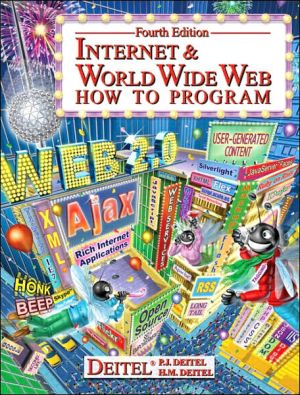
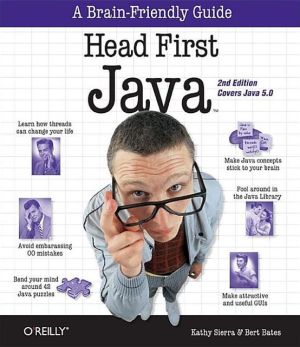
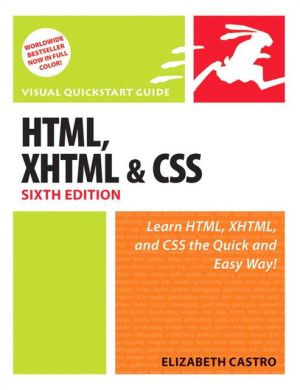
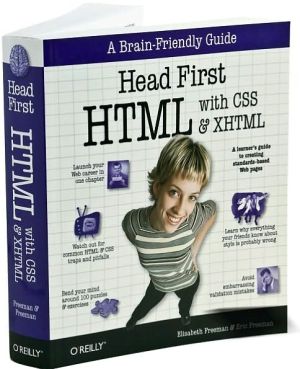
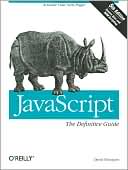
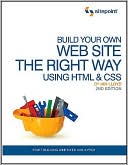
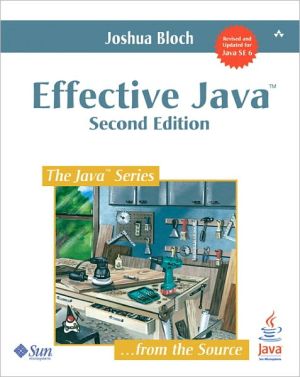
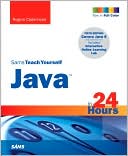
![Java How to Program: Early Objects Version [With CDROM] Java How to Program: Early Objects Version [With CDROM]](/application/data/covers/30/64/9780136053064.jpg)